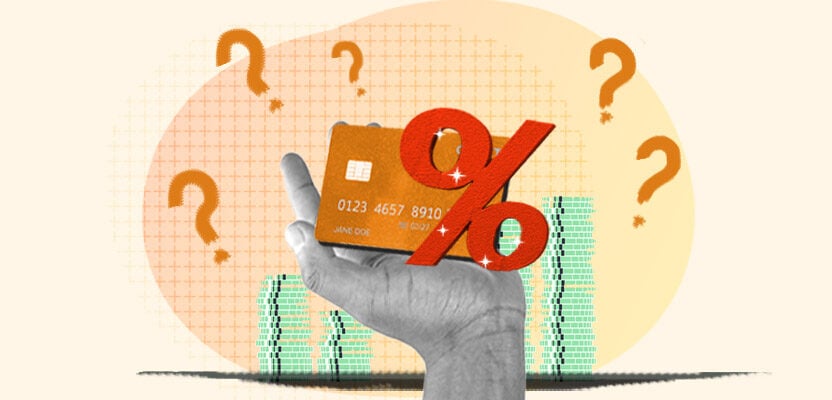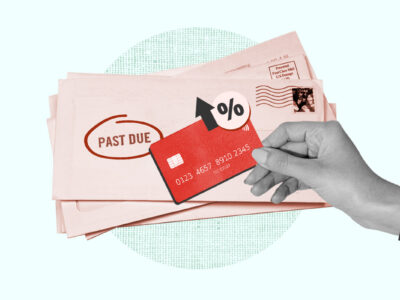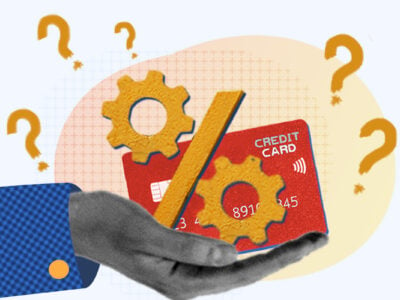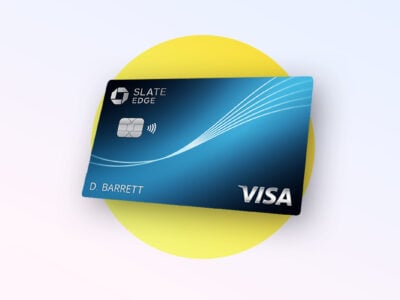APR—short for annual percentage rate—is how much it costs to borrow money with a credit card. It includes your annual interest rate and any other recurring fees.
A lower APR on a credit card is better, as that card will cost less to use (particularly if you leave a balance on it and accrue interest). However, what’s considered a “good APR” is relative—it depends on your credit history and the type of credit card you’re using.
Read on to learn what constitutes a good credit card APR, what types of APRs there are on credit cards, and how to qualify for a better rate.
Table of Contents
What is APR on a credit card?
The APR on a credit card is that credit card’s interest rate expressed annually. So for an idea of your card’s monthly interest rate, you would divide the APR by 12.
Most credit card issuers list each card’s APR instead of its interest rate, so you can use this number to gauge how much interest you would be charged on your credit card balance (i.e., any debt you leave on the card from one month to the next). 1
How to calculate your monthly interest from your APR
Because your card’s APR is an annual rate, to get your monthly interest rate (or something very close to it), just divide your APR by 12.
For example, if a credit card has an APR of 12%, you can expect to be charged roughly 1% interest on your balance each month.
What is a good APR for a credit card?
A good APR for a credit card is roughly 15% or below. However, what’s considered a good APR changes over time based on the national average credit card interest rate, which is currently between 15% and 16%. 2 Keep in mind that averages are imperfect measurements, and you shouldn’t be quick to reject credit cards that have APRs higher than 16%.
What makes an APR good on a given credit card also depends on the credit card type and on you, the borrower.
If you have a very good credit score, you’ll likely qualify for credit cards with lower APRs. However, if you have a bad credit score, the credit cards available to you will probably come with higher APRs.
How to compare credit card APRs
If you’re shopping around for a new credit card, comparing APRs is an important part of the process.
Rate shopping for a credit card can be difficult. Make sure you understand the following elements of credit cards:
- The different types of credit card APR
- The difference between a fixed and variable APR
- How credit card rewards usually affect the card’s APR
You can start by comparing our picks of the best credit cards with 0% APR.
Types of credit card APRs
Before you apply for a new credit card, check the card’s rates and fees (your card issuer may list these under “Terms and Conditions”). You’ll see that some credit cards actually list more than one type of APR.
Here are the five most common credit card APRs:
- Introductory APR: An intro APR is a promotional rate that’s lower than the regular rate, but is only in effect for a designated period of time (for example, 6 months). Credit card companies may offer an intro APR as low as 0%. Although these are often called zero-interest credit cards, the interest-free period only lasts a designated period of time.
- Purchase APR: This is the most common type of APR on credit cards. The purchase APR is the interest rate that applies if you use your card to make a purchase and you don’t pay off that purchase in full by the payment date.
- Balance transfer APR: This rate applies to a balance you transfer from one credit card to another credit card. This practice is a common form of debt consolidation, and may come with a higher APR than normal transactions, and will also likely incur a balance transfer fee.
- Cash advance APR: A cash advance is a short-term, high-interest loan you take out with your credit card at an ATM or bank. The maximum amount you can borrow is equivalent to your available credit. A cash advance APR is the interest rate applied to the money you borrow through a cash advance.
- Penalty APR: Credit card penalty APR is applied when you miss a payment or violate one of the terms and conditions of your credit card. It will be one of the highest APRs on your credit card. For example, the APR on certain Chase credit cards reaches 29.99% if you’re late with your payment by more than 60 days. 3
Assess your likelihood of incurring any of these interest rates, then check these rates for each credit card you’re comparing. For example, if you’re likely to consolidate debt in the future, avoid a credit card with a high balance transfer APR.
Fixed vs. variable credit card APRs
A fixed APR won’t usually change in response to market conditions, and if it does, your lender is required to notify you when it happens. If your rate goes up, they can’t usually apply the higher rate to your transactions before the notification has been sent. 4
By contrast, a variable APR fluctuates according to the movements of certain benchmarks. 4 The most common benchmark that lenders use is the prime rate—the interest rate they offer to their corporate customers—which banks determine individually based on the economy. 5 Your card issuer often doesn’t have to notify you if your variable APR changes.
You can check a card’s rates and fees page to see if it offers a fixed or variable APR. Once you have this information, you can decide whether you’ll benefit more from the stability of a fixed APR or the flexibility of a variable APR.
How credit card rewards influence your APR
Rewards credit cards typically come with higher APRs to compensate for the benefits they provide, such as cash back or airline miles.
Choosing a rewards card with a high APR can be worthwhile if you’ll benefit from the rewards more than you’ll suffer from the high APR. Just make sure that you have the ability to pay off your balance in full every month before overlooking a high APR in favor of rewards.
How to qualify for a good credit card APR
You can qualify for credit cards with lower APR by having a good credit score.
If your credit needs some work before you can qualify for a low-APR card, here are three quick and easy ways to improve your credit score:
- Always pay your bills on time: Making on-time payments to your credit accounts is the best way to improve your payment history, which is the single most important factor determining your credit score. Likewise, missing payments can significantly damage your credit score. So make paying your bills (or at least the minimum monthly payment) your first priority.
- Lower your credit utilization rate: Your credit utilization shows how much of your available credit you’re currently using. After payment history, it’s the second most important factor in your credit score. A lower utilization rate is better for your credit score than a higher one. To lower this percentage, you can either get more available credit (by opening new credit cards or increasing the limit on one of your cards) or lower the amount of credit you’re using (e.g., by paying down your balances).
- Check your credit report for errors: A Federal Trade Commission study found that one in five consumers found errors on their credit reports. To prevent errors from damaging your credit score, review your credit report on a regular basis. You can do so by getting a free copy of your credit report every 12 months from AnnualCreditReport.com. If you find any inaccurate information on your credit report, get rid of it immediately by disputing the item in question.
If you want to take immediate action on your current card’s interest rate, you can also try to lower your credit card APR by calling your lender. If you have a good relationship with them (meaning you’ve generally paid your bills on time), they might be willing to consider it.






